What is an aptitude test? Check the benefits and examples.

An aptitude test has been introduced into the hiring and selection process at many companies. It is used as a means to efficiently assess an applicant's personality and suitability for the job, which cannot be fully grasped through a resume and interview.
Because of a wide variety of test types, you may have difficulties utilizing it in an effective way.
This article details the types of aptitude tests, the advantages of introducing them, and example questions.
Compare the usage by many companies and find some tips to introduce the test.
What is an aptitude test?

An aptitude test is a way to fairly identify human resources. They are used to ascertain an applicant's abilities and personality, which are difficult to see in interviews and resumes.
It is often used as a criterion for candidates who match the ability values sought by the company and the company's philosophy and culture. However, it cannot be said with certainty that a person is not apt for the job just because of the test result.
Recently, more and more companies are utilizing the system to evaluate employees, stress tolerance and mental health checks.
Back to ContentsAdvantages

Aptitude tests, which have been introduced into employment examinations by many companies, allow you to efficiently and fairly assess applicants' personalities and abilities. Let us introduce other advantages of aptitude tests.
Following are three of them.
Objective evaluation of candidates
The aptitude test will provide objective information on the applicant's skills, personality, and suitability for the company. Those elements are difficult to discern from a resume or interview.
The employment examination also requires objective judgment that is not limited by academic background or appearance. However, some candidates, especially mid-career hires, tend to be accustomed to interviewing, which makes it difficult to determine whether they are suitable for the organization.
The use of aptitude tests eliminates the variability in evaluations by recruiters, allowing applicants to be screened with greater accuracy.
Evaluation and analysis
The results of an aptitude test can be used not only for recruitment but effectively utilized in the overall recruitment and selection process.
For instance, it can be used to analyze the tendency of candidates applying for the organization. Therefore, when you have difficulties selecting the right person, countermeasures including changing the recruitment PR can be taken regarding the result.
Also, the data will be one of the beneficial elements even after hiring since you can make use of it for evaluation, stuffing, training and more if you choose the test including such features.
Increase contact with candidates
The use of aptitude tests with services that provide feedback of results to examinees can also be used to attract applicants.
Many of them, especially students in internships and job hunting, tend to be struggling to find out what kind of job or company they are suited for. Therefore, during the internship or recruitment period, draw their attention from them suggesting feedback after the test.
From the candidates' point of view, this will lead to an opportunity to objectively know their ability. If you can acquire the needs such as "free testing for abilities' and "knowing the compatibility with a company," it is possible to promote contacts with them more often.
In that case, make sure whether the feedback sheet is easy to understand.
Method

Aptitude tests are conducted mainly in two ways: web-based and paper-based. The method of taking the test varies depending on the test site and the company that operates it.
The following explain in detail the methods of conducting aptitude tests. There are both advantages and disadvantages, and compare them and choose the one that is best suited to you.
Mark sheet method
The mark sheet is a method in which the examinee fills in the appropriate section of a question with a pencil on a designated sheet. In most cases, companies that provide aptitude tests handle the preparation of questions and forms, as well as the scoring but there are some companies that do the same.
Mark sheet required measures when preparing for tests as most of them are answered with numbers and symbols. Also, keep in mind that when scoring in-house, it may take time and effort to get the results of the analysis.
In-house method
The in-house method is that the company prepares its own venue and computers to conduct the test. The examinee takes the aptitude test on a computer provided at the venue.
Although the company must provide its own venue and computer, there are advantages to save time and effort until the results are available. For instance, immediate test results allow you to make use of them for the selection process.
Test Center Method
In the test center method, aptitude test providers setup venues throughout a country/countries where examinees take the tests. Examinees enter their answers on a computer provided at the test center.
The advantages are that there is no risk of fraud by examination proctors and that the outsourcing can lead to less time-consuming. When you focus on the disadvantage, it costs you for the outsourcing instead of the easiness.
Web method
In the Web-based method, examinees take the aptitude test at home or other places, and companies can specify the period during which they wish to take the aptitude test. This method will attract examinees in that they can take it at their own time, which lowers the hurdle for taking the test.
In companies' place, it is expected to save time and costs since you do not need to provide a venue, computers, and personnel. It is also easy to analyze and compile test results, however, you should keep your eyes on the possibility of fraud such as proxy testing.
Back to ContentsMeasures and sample questions

The measurements are broadly divided into two types: individual ability and personality.
Proficiency tests are used to determine basic academic skills such as language and mathematical skills, as well as general common sense and basic skills required in an area. The questions are presented in the form of an academic achievement test, but the difficulty itself is not very high, and the questions are divided into verbal and non-verbal sections.
Personality tests, as the name implies, are the methods that measure individual personalities, values and thought processes. It is used to determine whether a candidate has active communication skill and ambition after joining a company, etc. in order to prevent mismatches between a candidate and a company.
Intelligence test (verbal area)
Language comprehension measures candidates' vocabulary level and other gifts or talents related to language.
Bilateral relationship
In this section, candidates are required to choose synonyms, which measures the abilities to decipher the relationship between two words.
Meaning
In this question, candidates are required to select a word or phrase from a list of choices that is identical to the question text. Words and phrases in this section have a tendency, and it is necessary to understand the exact meaning of the word or phrase.
Usage of a word
This is an alternative question in which candidates select the same usage of a word or phrase from a list. For example, they will be asked to identify homonyms, metaphorical words and phrases with the same grammatical usage.
Sentence rearrangement
This question is required to rearrange disjointed sentences into the correct order. Candidates need to infer the connection of the entire sentence from the choices.
Fill in the blank
This question is to fill in the appropriate words or sentences to the blanks. You need to guess from the sentences before and after the blanks and choose the option that gives the correct meaning.
Intelligence test (non-verbal area)
This focuses on calculation questions to assess the calculation skill.
Calculating the values of unknown quantities
The question is one of the math word problems required to calculate the values of unknown quantities in the logical way.
Account
This type of question is related to payments, discounts, installment payments, and divisions. Many of the questions tend to be about averages or percentages of payments.
Set
Candidates are required to derive the number of people or quantities from a group that match the conditions asked in the question. Drawing a Venn diagram to visualize the answer will make it easier to derive the answer.
Probability
The question is to derive the probability of a certain event by calculation.
For example, a question might follow the pattern of "If a coin is tossed twice, find the probability that it will come up face down only once.
Tables and Materials
It is required to read, select, and calculate the information from tables, graphs, sentences, and other materials presented as a question.
Number of cases
Calculate and find out how many patterns there are in total for various matters, such as the way the dice roll several times.
Inference
Inference is a question that involves reading the information given in the question text and selecting a matter that can be inferred to be "always correct."
It is a particularly important area of "logic questions" in the aptitude test of non-verbal area.
Calculate speed
This is the question to find speed, time, and distance using formulas. Traveling salesman problem is sometimes used in this section.
Profit and Loss
This question is to find the list price, profit, and selling price of a product. It is important to understand the relationship between these costs.
Personality test
Personality tests have answers that are considered favorable, but there are no correct answers. There are three trends in the questions that are frequently asked.
Personality Traits
The atmosphere within a company varies widely from company to company. Questions will be asked to gauge whether the candidate's personality fits the company's corporate culture.
Adaptability to the organization
Regardless of industry or job type, different companies have different work practices and corporate cultures. The approach to personnel evaluation also tends to differ from company to company.
In this process, candidates are checked for their adaptability to the organization and confirm that their human nature and way of thinking are in line with the corporate culture.
Adaptability to the job
There are many different types of jobs within a company such as sales and technical positions. This information is used to determine what type of job a candidate will be matched to within the company.
Back to ContentsMajor types of aptitude tests

It is important to clarify the purpose of using aptitude tests before considering which test to adopt. There are a wide variety of aptitude tests, but we will introduce some of the major aptitude tests used by many companies.
Compare the features of each and adopt the one that best suits your company.
SPI3
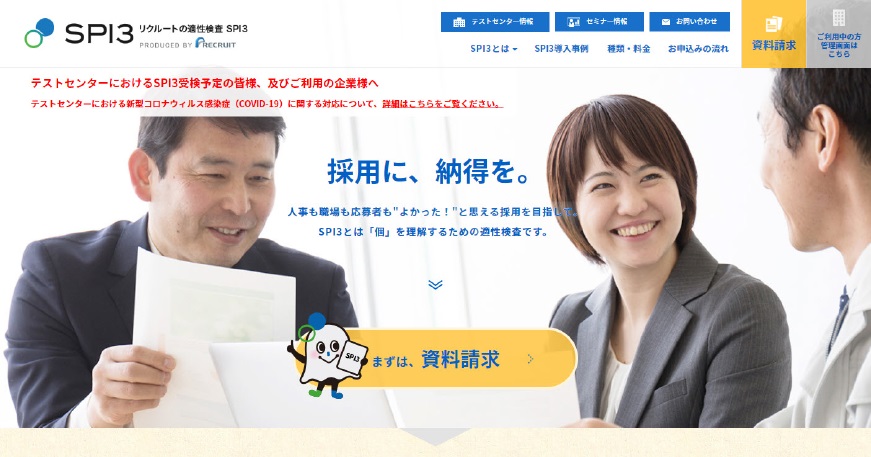
[Reference.https://www.spi.recruit.co.jp/![]() ]
]
SPI is an aptitude test so mainstream that it is said to have been introduced by more than 10,000 companies in Japan.
We measure "personality aptitude" and "intellectual ability" to determine what kind of work an applicant is suited for and what kind of organization he or she will fit in with.
The fee is 4,400 yen for the web test format and 6,050 yen for the test center format.
You can choose from both web and mark-sensing methods, so you can select the method that best suits your company's needs.
treasure chest (in the story of Urashima Taro)
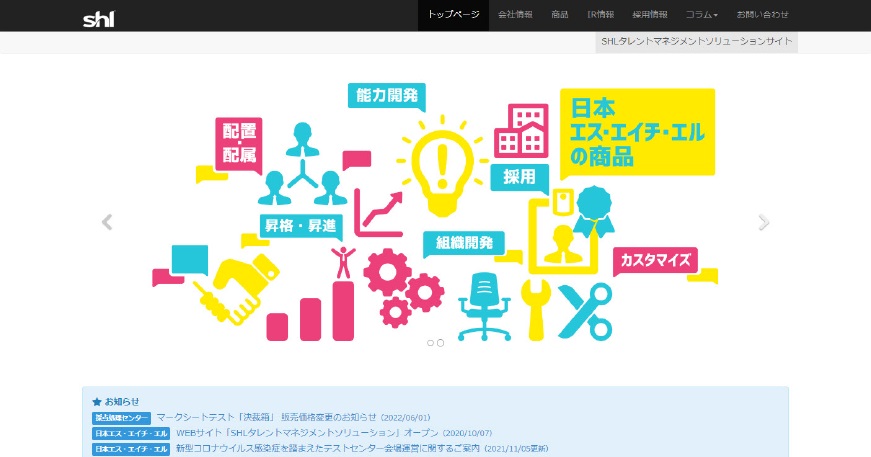
[Reference.http://www.shl.co.jp/]
After the SPI, the Tamatebako aptitude test is used by the largest number of companies. It is marketed as an aptitude test for companies by HR consulting firm Japan S.H.L. Inc.
In addition to basic ability and personality, "Tamatebako I Ver.2" can output predicted values of stress tolerance and work motivation as abilities to perform tasks smoothly, as well as checkpoints that can be used during interviews.
The short, 11-minute web-based test is also attractive because it can be administered without any burden on the examinee. The introduction cost is 1,320,000 yen, but there is no limit to the number of examinees.
CUBIC
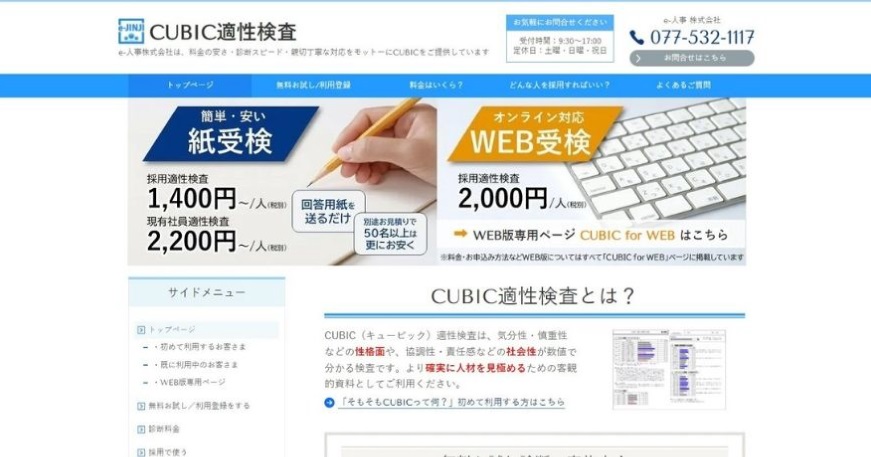
[Reference.https://www.e-jinjibu.jp/]
CUBIC is an aptitude test marketed by e-Human Resources, Inc.
The company's motto is "low fees, speedy diagnosis, and friendly and courteous service." After the inspection, fax or e-mail the answer sheet, and the diagnosis results will be delivered to your registered e-mail address in as little as 30 minutes. The convenience of being able to use the service on the same day you complete the registration process is also attractive.
The test can be conducted in a short period of time: 20 minutes for the employment aptitude test and 5 minutes for the ability test.
The Recruitment Aptitude Test costs 1,870 yen/person and the Ability Test costs 550 yen/subject, making it relatively inexpensive compared to other company-provided aptitude tests. We also offer pay-as-you-go and flat-rate plans, where the more people use the test, the lower the unit price.
GAB

[Reference.http://www.shl.co.jp/]
GAB is a test developed for the purpose of recruiting new graduates marketed by Japan S.H.L. Inc.
The measurement of the parts related to verbal and numerical intelligence, as well as the personal part, can predict the nine characteristics related to "vitality" and "teamwork" that should be confirmed before entering the company, the management and administrative skills that can be expected after entering the company, and the job for which the examinee is suited.
The duration of the test is 80 minutes for the web test and 90 minutes for the mark-sensing method. The cost is 660 yen for the question booklet and 3,850 yen for the scoring process.
Uchida-Kraepelin test
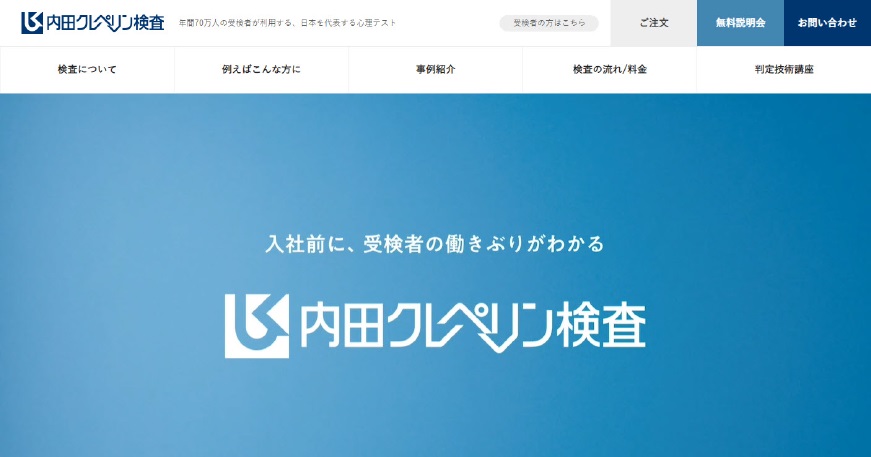
[Reference.https://www.nsgk.co.jp/uk]
Compared to a test in which the examinee answers from a list of choices presented as "yes" or "no," this test is considered more valid and reliable because it is more difficult for the examinee to intentionally produce a response that is considered desirable.
The implementation time is 50 minutes, and the individual diagnostic judgment for each person is 2,420 yen, but the price varies depending on the judgment format.
learningBOX
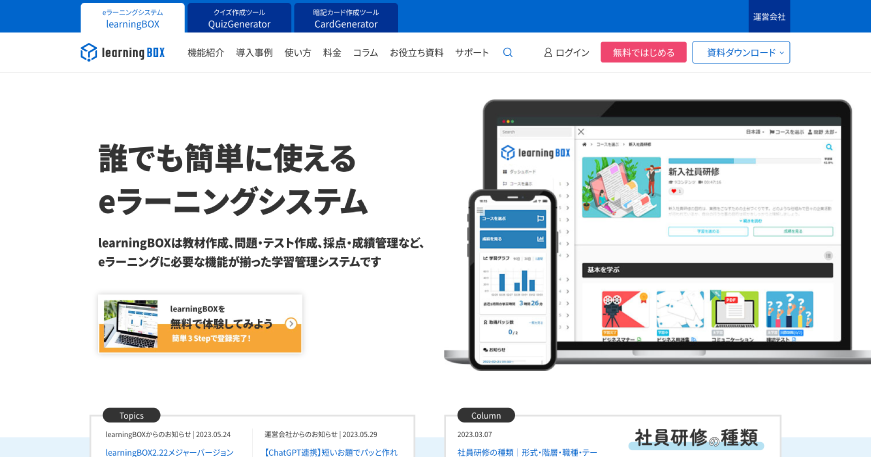
[Reference.https://learningbox.online/]
The learningBOX can determine the characteristics and knowledge level of the examineesDiagnostic test creation functionThere is a This function allows examinees to answer various questions prepared by the administrator and view the results according to their answers.
An aptitude test for employment selection would provide questions that can measure the skills and abilities required for the position sought. Based on the results of the analysis, we will be able to provide appropriate responses based on the aptitudes and abilities of the examinees.
In addition to creating diagnostic tests, the feature also allows users to manage the status and results of the tests. Since the questions can be edited flexibly, we recommend learningBOX's diagnostic test creation function when conducting aptitude tests.
Back to Contents"learningBOX" as an aptitude test
Aptitude tests are useful not only in employment examinations, but also in post-employment department assignments and training.
There are various types of aptitude tests. When introducing one of them, compare the features of each test and confirm that it is suitable for your company.
Our "learningBOX In the "Web Test" feature, you can use the diagnostic test creation function to create aptitude test content to conduct Web tests. In addition, all the functions necessary for aptitude tests, such as score management and participant management, are available.
You can try up to 10 accounts for free forever. Feel free to try our Free Plan.
▼You may also like:
Back to Contents

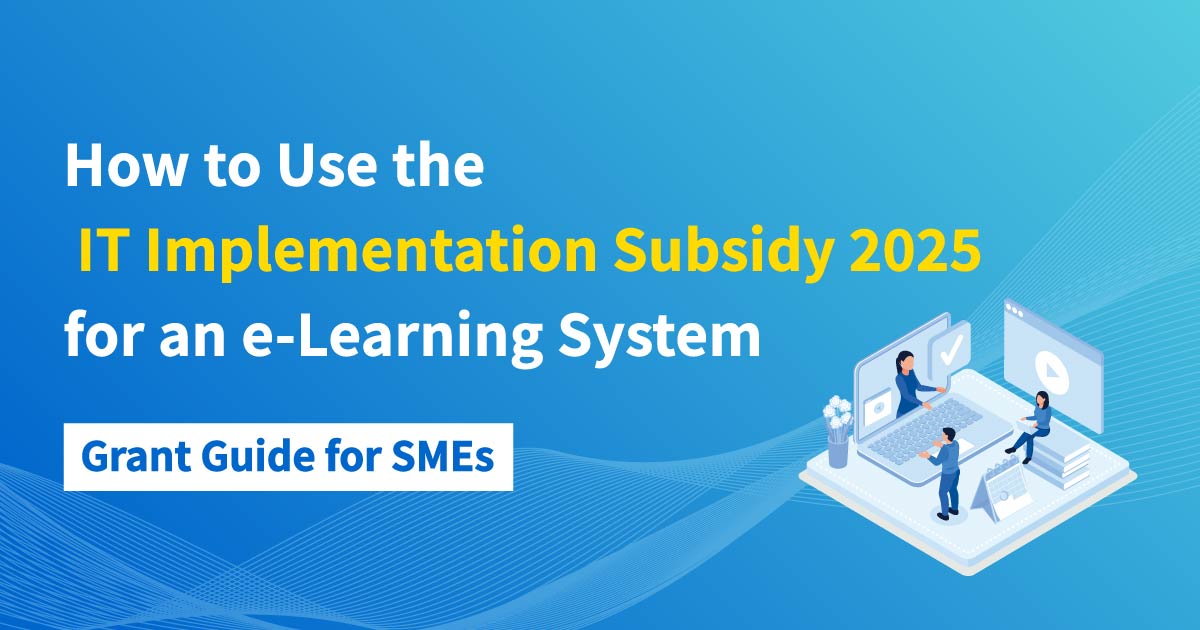
-
Discover rich featuresService Guide
-
Feel free to contact usGet in Touch
-
Try our Free PlanTry Free Plan










